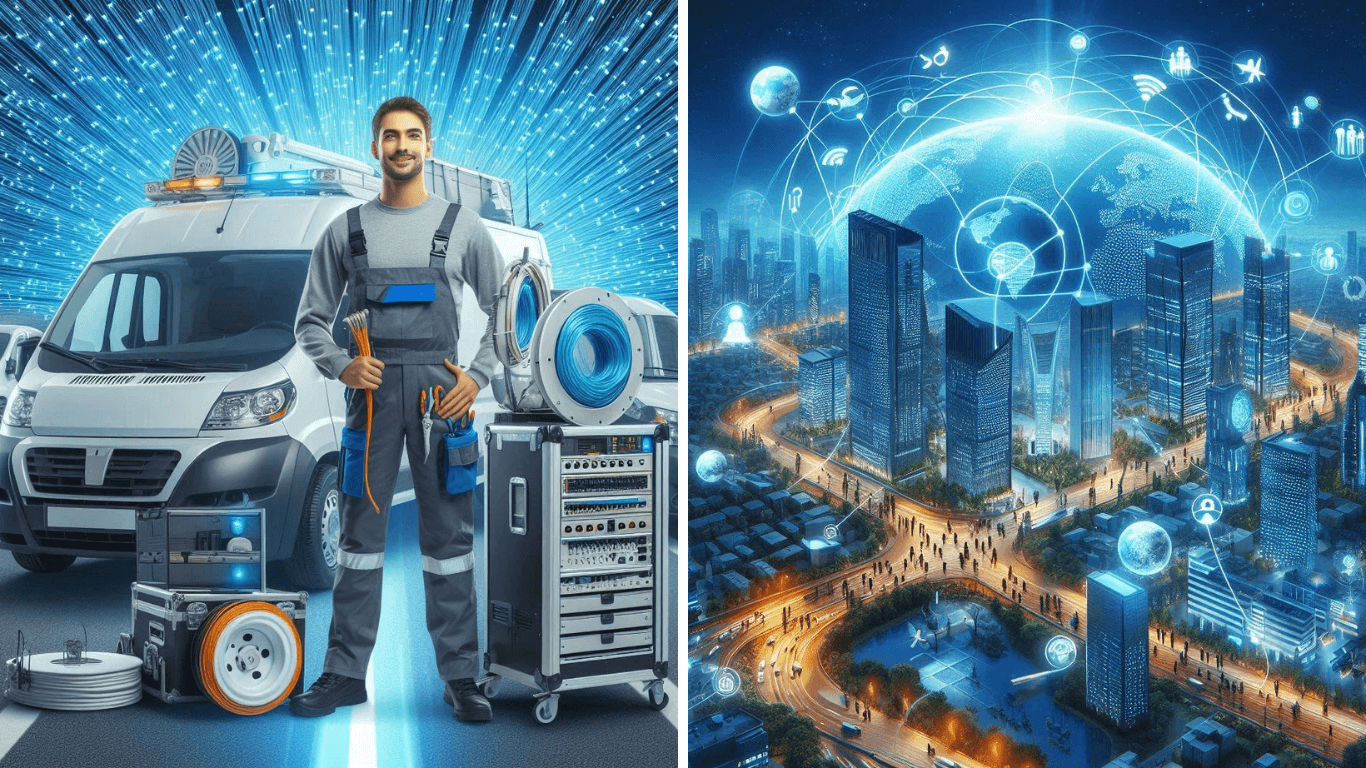
Fiber optic cables have revolutionized connectivity, offering significant advantages for commercial buildings. Whether you’re managing a small office or a large corporate complex, fiber optic technology ensures fast, secure, and reliable data transmission. Let’s explore the key benefits of fiber optic cables in commercial settings:
1. Higher Bandwidth
One of the most significant benefits of fiber optic cables is their ability to provide much higher bandwidth compared to traditional copper cables. This means businesses can transmit large volumes of data without experiencing slowdowns. For commercial buildings that rely heavily on data-intensive applications, such as video conferencing, cloud storage, and real-time collaboration tools, fiber optic cables ensure seamless operation.
2. Improved Internet Speed
Fiber optic cables offer lightning-fast internet speeds, ranging from 5 Mbps to a staggering 100 Gbps. This high-speed connectivity is crucial for businesses that depend on activities like HD streaming, web conferencing, and running cloud applications efficiently. With fiber optics, employees can enjoy smooth internet access, leading to increased productivity.
3. Enhanced Cybersecurity
In today’s world of growing cybersecurity threats, data protection is a top priority. Fiber optic cables are inherently more secure than copper cables because they are less vulnerable to physical tapping. Attempting to tap into a fiber optic cable without being detected is extremely difficult, making it a safer option for data transmission. Commercial buildings that handle sensitive data, such as financial institutions and healthcare facilities, can greatly benefit from this enhanced security.
4. Lower Latency
Latency refers to the delay in data transmission from one location to another. Fiber optics significantly reduce latency, ensuring that data is transmitted faster and more efficiently. This low latency is particularly beneficial for applications that require real-time data transmission, such as VoIP (Voice over Internet Protocol), cloud services, and large file transfers.
5. Reliability
One of the standout features of fiber optic cables is their reliability. Unlike copper cables, fiber optics are less affected by external factors like weather conditions and electromagnetic interference. Whether it’s stormy weather or electronic devices operating nearby, fiber optic cables maintain consistent performance, ensuring uninterrupted connectivity for commercial buildings.
6. Future-Proofing
As new technologies like 5G, the Internet of Things (IoT), and smart cities emerge, commercial buildings must be equipped to handle the demands of these innovations. Fiber optic infrastructure is essential for supporting these high-tech applications. By investing in fiber optics today, businesses can ensure their building is prepared for the future, making it a forward-thinking choice for commercial property owners.
7. Ease of Installation
Fiber optic cables are thinner, lighter, and more flexible than traditional copper cables, making them easier to install. Their compact size means they can be laid over long distances without the need for bulky conduits, reducing installation time and labor costs. This ease of installation makes fiber optics an ideal choice for commercial buildings, where minimizing disruptions is critical.
How to Choose the Right Type of Fiber Optic Cables:
- Determine the Application: Identify whether you need single-mode or multi-mode fiber optics based on the distance and bandwidth requirements. Single-mode is ideal for long-distance transmissions, while multi-mode works well for shorter distances and higher data rates.
- Consider Bandwidth Needs: Evaluate the bandwidth requirements of your commercial building or application. For high-speed internet, cloud computing, or heavy data use, you may need cables with higher bandwidth capacities.
- Indoor vs. Outdoor Use: Consider whether the cable will be installed indoors or outdoors. Outdoor fiber optic cables are typically more durable and weather-resistant, while indoor cables are lighter and easier to install.
- Cable Strength: If the installation involves tough conditions, such as extreme weather or rough environments, opt for armored fiber optic cables that offer extra protection.
- Connector Type: Ensure the cable connectors match the devices you plan to connect. Common connectors include SC, LC, and ST connectors.
- Future-Proofing: Plan for future technological advancements like 5G or IoT, and choose cables that can handle increased data demands in the coming years.
Conclusion
Fiber optic cables offer a range of benefits for commercial buildings, from higher bandwidth and faster speeds to enhanced cybersecurity and reliability. They also future-proof your building for the latest technological advancements, making them a smart investment for businesses of all sizes. With fiber optics, commercial buildings can enjoy superior performance, improved security, and a more efficient, connected work environment.